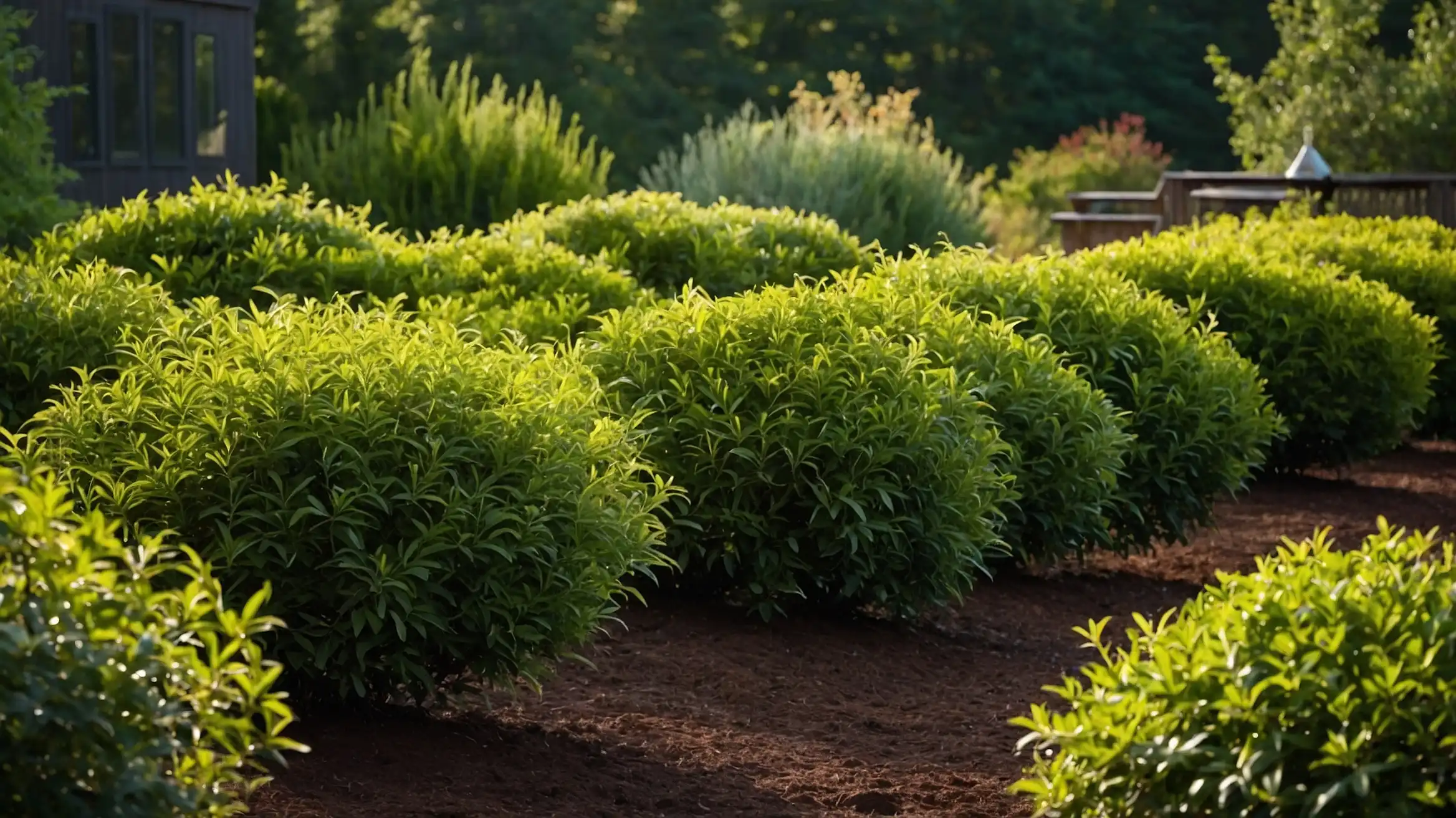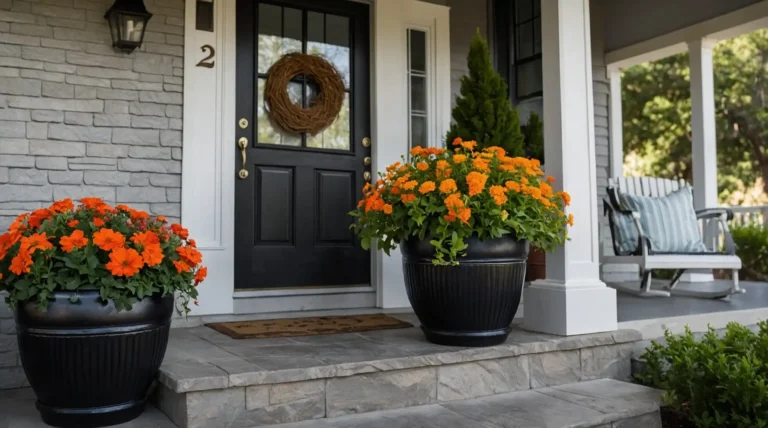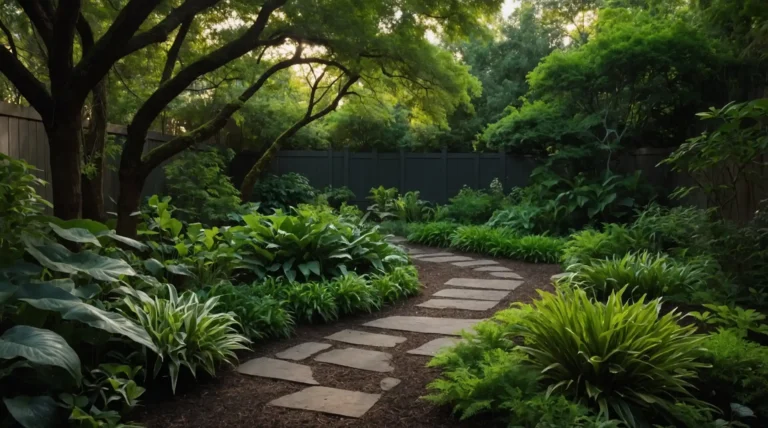21 Fast-Growing Privacy Shrubs for Ultimate Backyard Seclusion
Looking to create a natural barrier between your yard and the neighbors?
Privacy shrubs offer the perfect solution when you need screening that grows quickly without breaking the bank.
Unlike fences that require permits and significant investment, fast-growing shrubs provide living walls that enhance your landscape while blocking unwanted views and noise.
With so many varieties available, you can find options that thrive in your specific climate and soil conditions while meeting your aesthetic preferences.
Let’s explore 21 fast-growing privacy shrubs that will transform your outdoor space in record time.
1: Arborvitae (Thuja occidentalis)
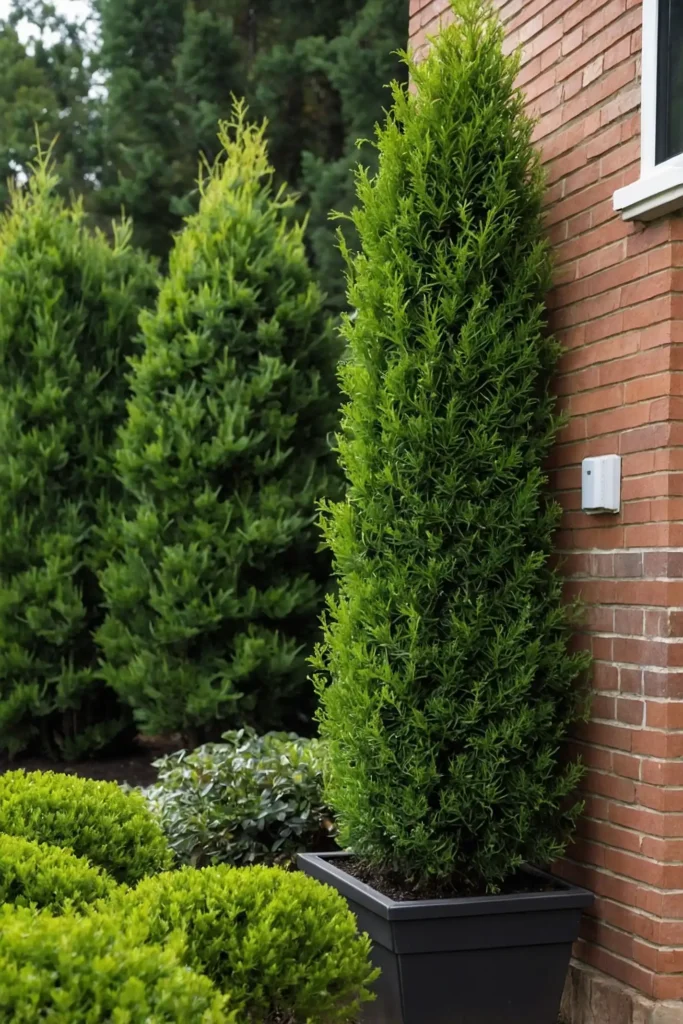
These evergreen classics grow up to 3 feet per year and create dense, columnar screens perfect for property boundaries.
Their naturally pyramid-shaped growth habit requires minimal pruning.
Arborvitae tolerate a wide range of soil conditions and thrive in full sun to partial shade.
The ‘Green Giant’ and ‘Emerald Green’ varieties are particularly popular for privacy hedges.
Plant them 3-4 feet apart for a seamless living wall that provides year-round screening and wind protection.
2: Privet (Ligustrum)
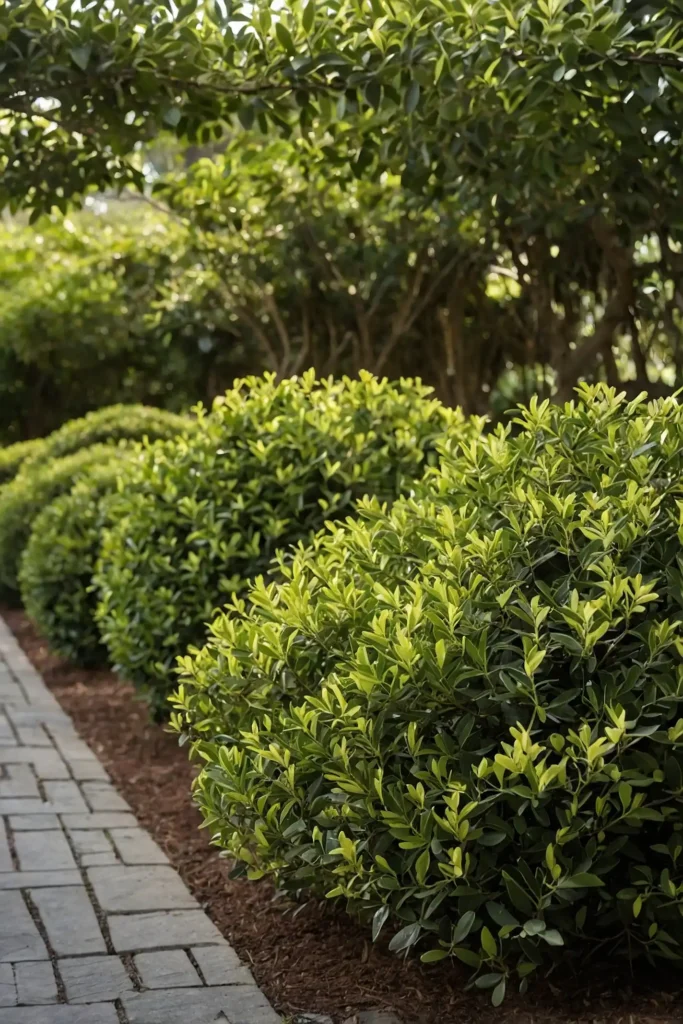
Privets grow astonishingly fast—up to 3 feet annually—making them privacy champions when you need quick results.
Their small leaves create a dense screen that responds well to shaping.
You can maintain privet formally with regular trimming or allow a more natural silhouette.
Most varieties produce fragrant white flowers in spring that attract pollinators.
Be aware that some privet species can be invasive in certain regions, so check local recommendations before planting.
3: Bamboo (Fargesia species)
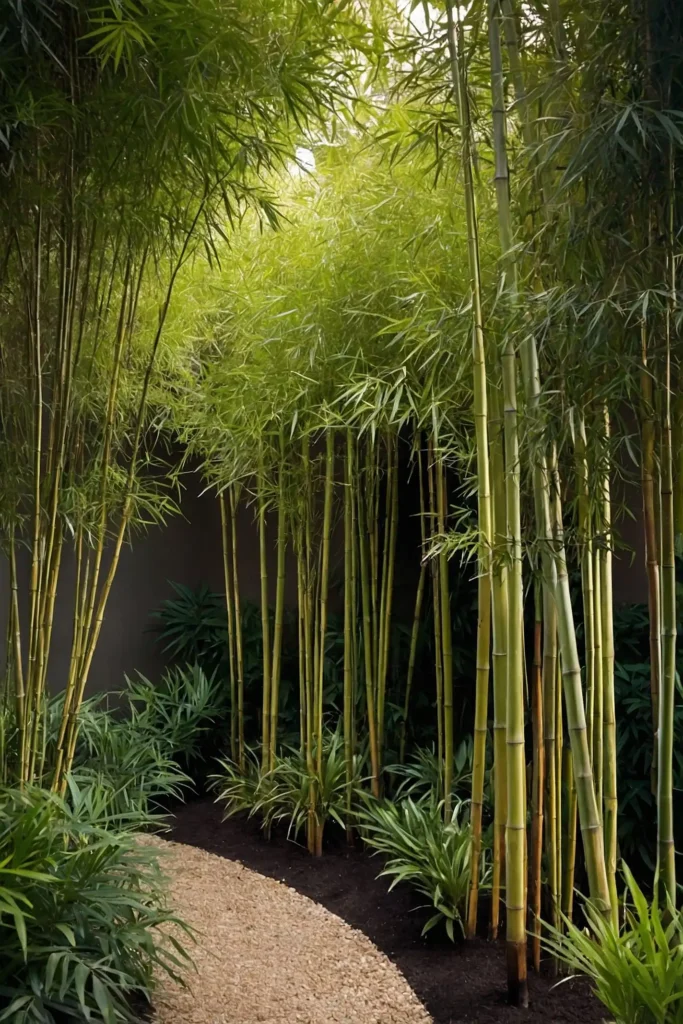
For an exotic privacy solution, clumping bamboo varieties grow rapidly without the invasive tendencies of running types.
These graceful plants create vertical interest with their distinctive canes and rustling foliage.
Fargesia bamboos grow 1-3 feet annually and reach heights of 8-12 feet at maturity.
Their arching habit provides both privacy and movement in the landscape.
Choose clumping varieties like Fargesia rufa or Fargesia dracocephala to avoid the spreading problems associated with running bamboos.
4: Leyland Cypress (Cupressocyparis leylandii)
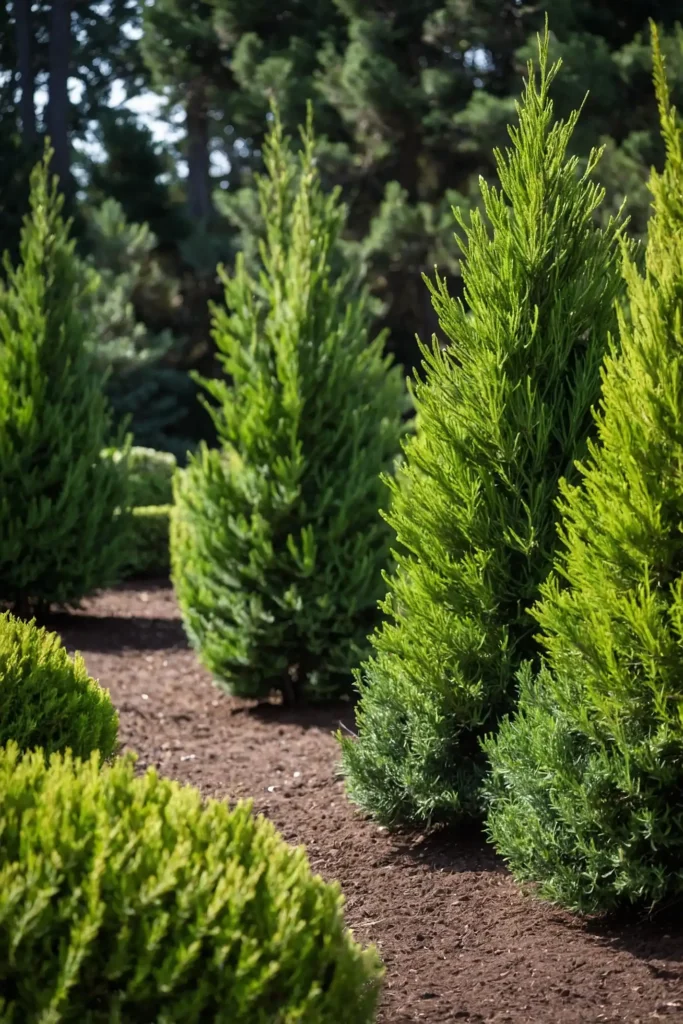
These hybrid evergreens grow an impressive 3-4 feet yearly when young, quickly establishing a tall, dense screen.
Their feathery, blue-green foliage creates an attractive backdrop for other garden plants.
Leyland cypresses thrive in full sun and adapt to most soil types as long as drainage is good. They can reach heights of 60+ feet if left unpruned.
Space them 6-8 feet apart for a hedge that fills in rapidly while allowing enough airflow to prevent disease issues.
5: Red-Twig Dogwood (Cornus sericea)

For four-season interest in your privacy screen, red-twig dogwoods offer vibrant winter color after growing 2-3 feet annually.
Their crimson stems provide striking visual interest when other plants are dormant.
These adaptable shrubs thrive in moist conditions and partial shade, making them ideal for challenging sites.
Their white spring flowers and fall berries attract wildlife.
For the best red stem color, prune older canes to the ground every few years, as the youngest growth displays the most vivid coloration.
6: Forsythia (Forsythia x intermedia)
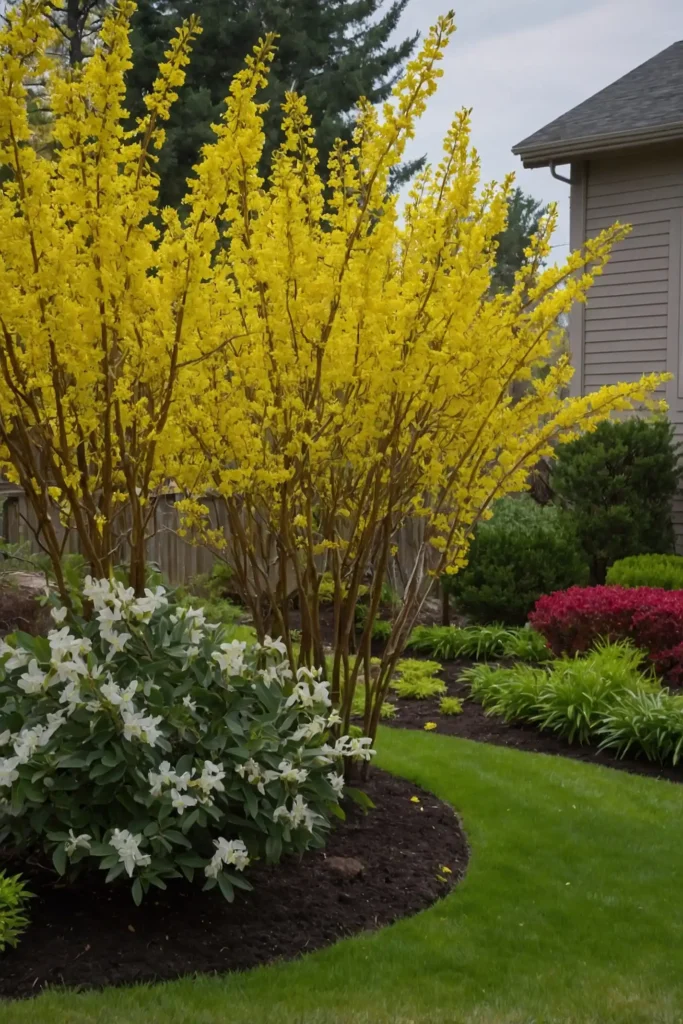
These harbingers of spring grow up to 2 feet yearly and burst with brilliant yellow flowers before their leaves emerge.
The arching branches create an informal privacy screen with seasonal drama.
Forsythia requires little maintenance beyond occasional thinning of older stems.
They adapt to most soil conditions and prefer full sun for best flowering.
Plant them 4-6 feet apart to allow their natural vase-shaped form to develop while still creating effective screening.
7: Photinia (Photinia x fraseri)

Photinia offers stunning red new growth that matures to glossy green, growing 2-3 feet annually in ideal conditions.
The ‘Red Robin’ variety is particularly popular for its vibrant spring color.
These versatile shrubs tolerate pruning well, making them suitable for formal hedges or more natural screens.
Their white spring flowers contrast beautifully with the red foliage.
Plant in full sun for the most intense red coloration, spacing plants 5-6 feet apart for a hedge that fills in quickly.
8: Viburnum (Viburnum species)
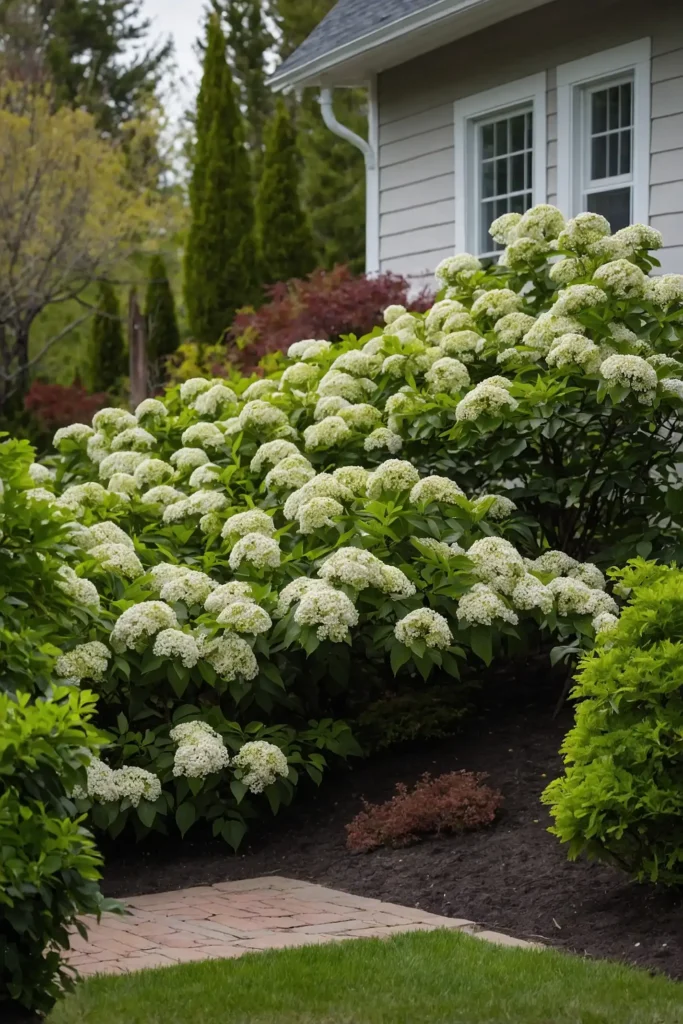
The viburnum family includes many fast-growing privacy options that add fragrant flowers and berries to your landscape.
Most varieties grow 1-2 feet annually and develop into substantial shrubs.
Varieties like Viburnum tinus remain evergreen in milder climates, while deciduous types like V. dentatum offer spectacular fall color.
Many produce berries that attract birds.
These adaptable plants thrive in sun or partial shade and work well in mixed privacy borders where their seasonal features can shine.
9: Mock Orange (Philadelphus coronarius)
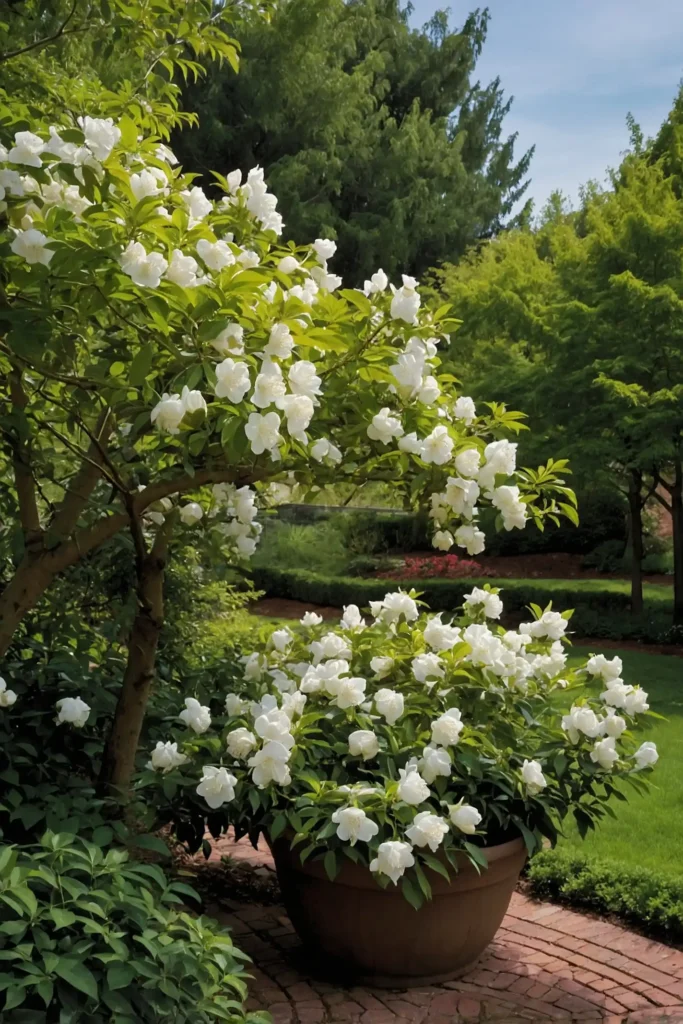
For fragrant privacy, mock orange grows 1-2 feet per year and produces intensely sweet-scented white flowers in late spring.
The citrus-like fragrance fills the garden during blooming season.
These old-fashioned shrubs require minimal care and adapt to most garden conditions.
Their arching branches create a fountain-like form that softens boundaries.
Prune immediately after flowering to maintain shape without sacrificing next year’s blooms, which form on old wood.
10: Euonymus (Euonymus japonicus)

These versatile evergreens grow 1-2 feet annually and offer numerous variegated options for brightening privacy screens.
Their dense growth habit creates effective year-round screening.
Euonymus tolerates pollution and coastal conditions, making them ideal for urban gardens.
The gold and silver variegated forms add light to shaded areas.
Plant them 3-4 feet apart for a continuous hedge, and shear annually to maintain a formal appearance or allow a more casual growth habit.
11: Holly (Ilex species)

For a privacy hedge with security benefits, holly varieties grow 1-2 feet yearly while developing prickly foliage that discourages intruders.
Many produce colorful berries that persist through winter.
Evergreen varieties like ‘Nellie R. Stevens’ create year-round screening with glossy, dark green leaves.
For berry production, you’ll need both male and female plants.
These long-lived shrubs require well-drained soil and full to partial sun, rewarding you with decades of low-maintenance privacy.
12: Ninebark (Physocarpus opulifolius)
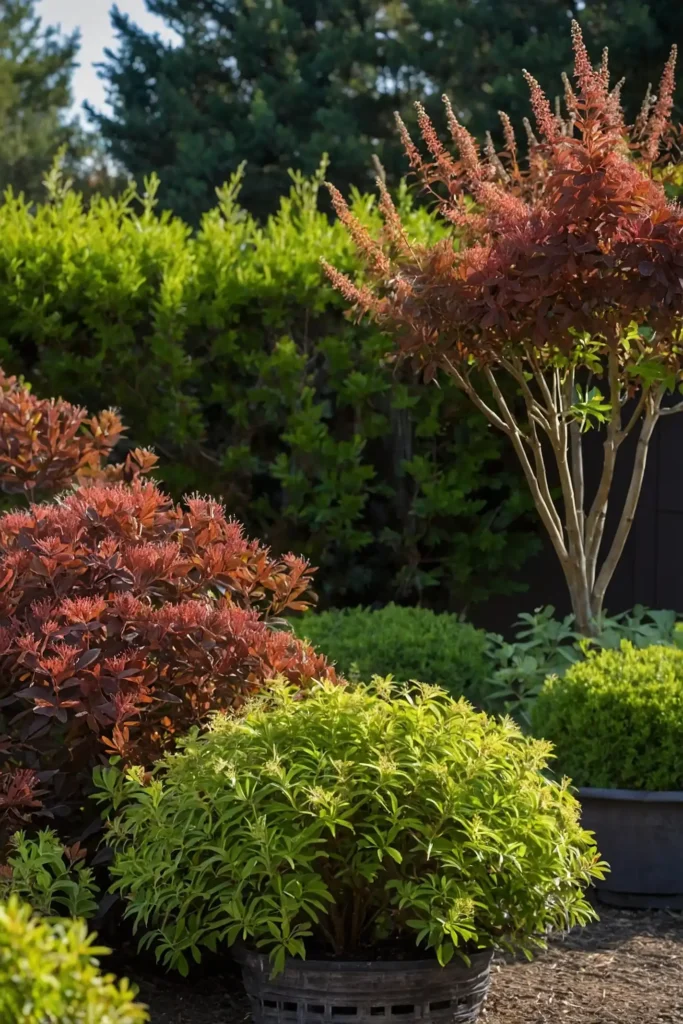
Ninebark grows 1-2 feet annually and offers colorful foliage options from burgundy to gold, creating privacy with visual interest.
Its exfoliating bark adds winter appeal when leaves drop.
Modern cultivars like ‘Diabolo’ and ‘Coppertina’ maintain their rich colors throughout the growing season.
White flower clusters in spring attract beneficial insects.
These tough native shrubs tolerate poor soil and drought once established, making them low-maintenance privacy solutions.
13: California Lilac (Ceanothus)

For fast privacy in mild climates, California lilac grows 2-3 feet yearly and covers itself with stunning blue flowers each spring.
These West Coast natives attract butterflies and beneficial insects.
Evergreen varieties provide year-round screening in zones 8-10, while deciduous types extend the range to colder areas.
Their drought tolerance makes them eco-friendly choices.
Plant in well-drained soil and full sun for best results, as these shrubs dislike wet feet and heavy clay.
14: Butterfly Bush (Buddleia davidii)
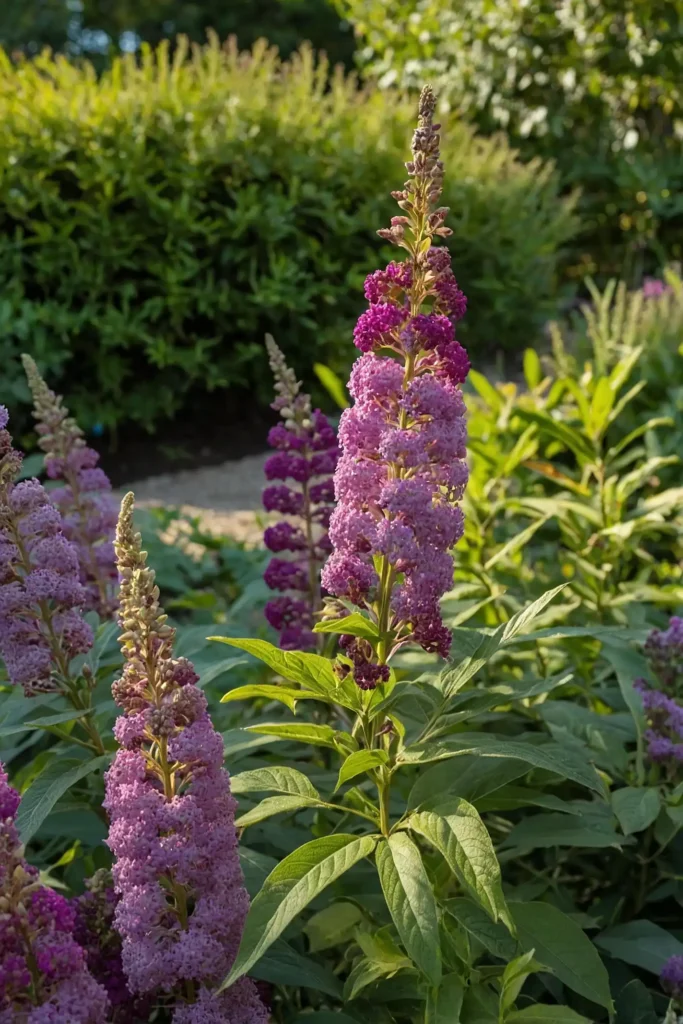
These rapid growers add 3-5 feet of height annually while attracting clouds of butterflies with their fragrant flower panicles.
New sterile varieties prevent the invasive tendencies of older types.
Butterfly bushes bloom from summer through fall, with colors ranging from white to deep purple. Their arching growth habit creates informal screening.
Cut these vigorous shrubs back by two-thirds in early spring to control size and encourage more prolific flowering.
15: Loropetalum (Loropetalum chinense)
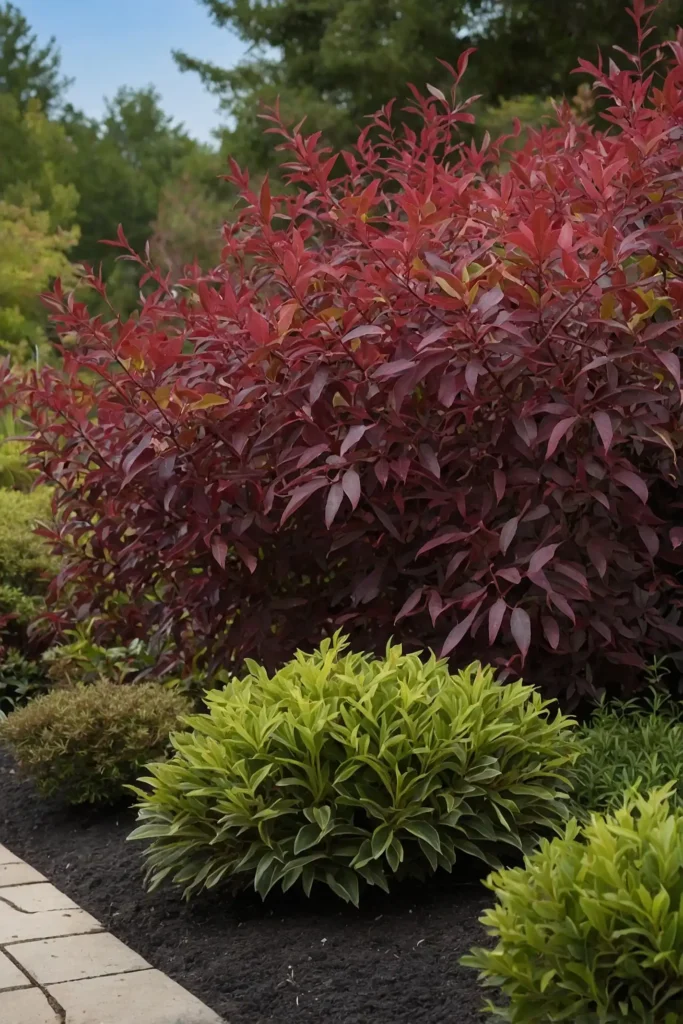
These Asian beauties grow 1-2 feet yearly and offer burgundy foliage and pink fringe-like flowers for privacy with flair.
Newer varieties maintain deep coloration throughout the growing season.
Loropetalum creates semi-evergreen screening in zones 7-10, occasionally dropping leaves in colder winters.
Their horizontal branching pattern provides layered privacy.
Plant in acidic, well-drained soil for best performance, as they share soil preferences with their azalea relatives.
16: Oleander (Nerium oleander)
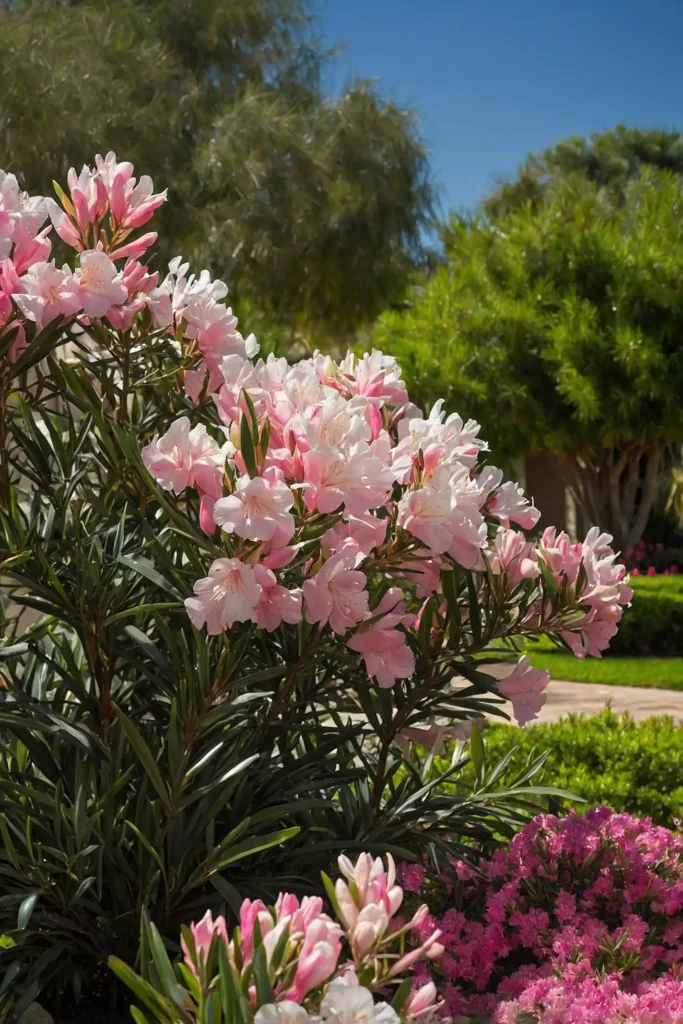
For hot, dry regions, oleander grows 3-4 feet annually and creates flowering privacy screens with minimal water requirements.
Their tubular blooms appear in shades from white to deep pink.
These Mediterranean natives thrive in poor soil and coastal conditions where salt spray would damage other plants. They remain evergreen in mild winter areas.
Remember that all parts of oleander are highly toxic, so consider placement away from children’s play areas and pet zones.
17: Rose of Sharon (Hibiscus syriacus)
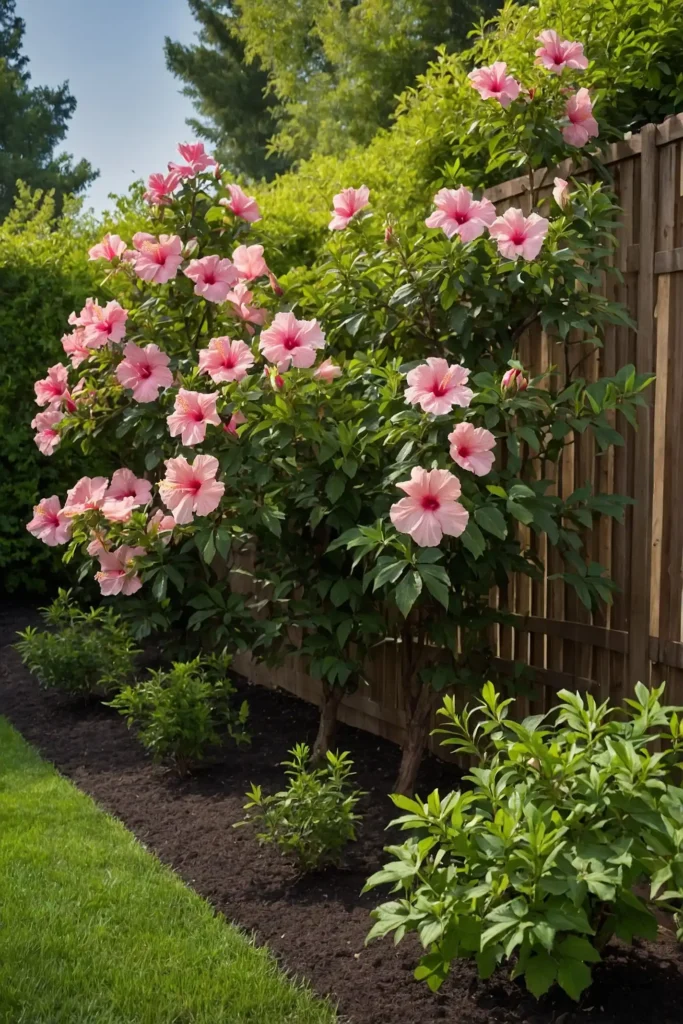
Growing 2-3 feet yearly, Rose of Sharon produces tropical-looking flowers from midsummer through fall when many shrubs have finished blooming.
The upright growth habit creates natural columnar screening.
These versatile shrubs tolerate urban conditions and clay soil better than many privacy options.
Their late-season pollinator support makes them ecologically valuable.
Deadhead spent blooms to prevent excessive self-seeding, especially in regions where they can naturalize.
18: Juniper (Juniperus species)
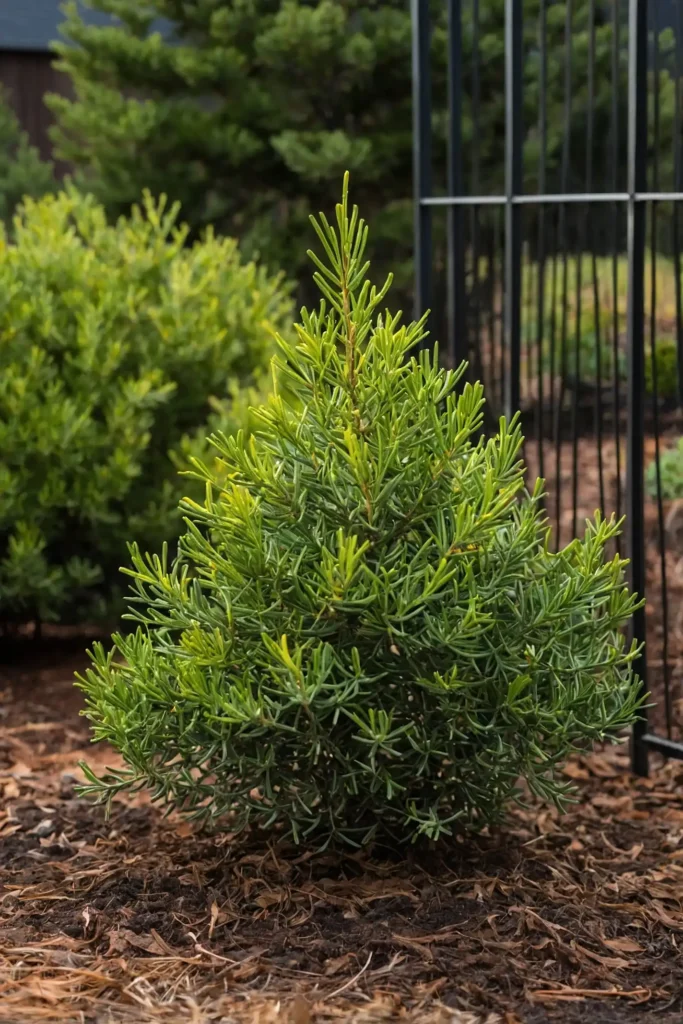
Fast-growing juniper varieties add 1-3 feet annually while providing textural evergreen screening that thrives in challenging conditions.
Their blue-green to gold foliage options offer design flexibility.
Upright varieties like ‘Skyrocket’ and ‘Blue Point’ create columnar privacy without taking up much ground space.
Their aromatic foliage deters deer and other browsing animals.
Plant junipers in full sun and well-drained soil, as they dislike wet conditions that can lead to root diseases.
19: Japanese Cedar (Cryptomeria japonica)
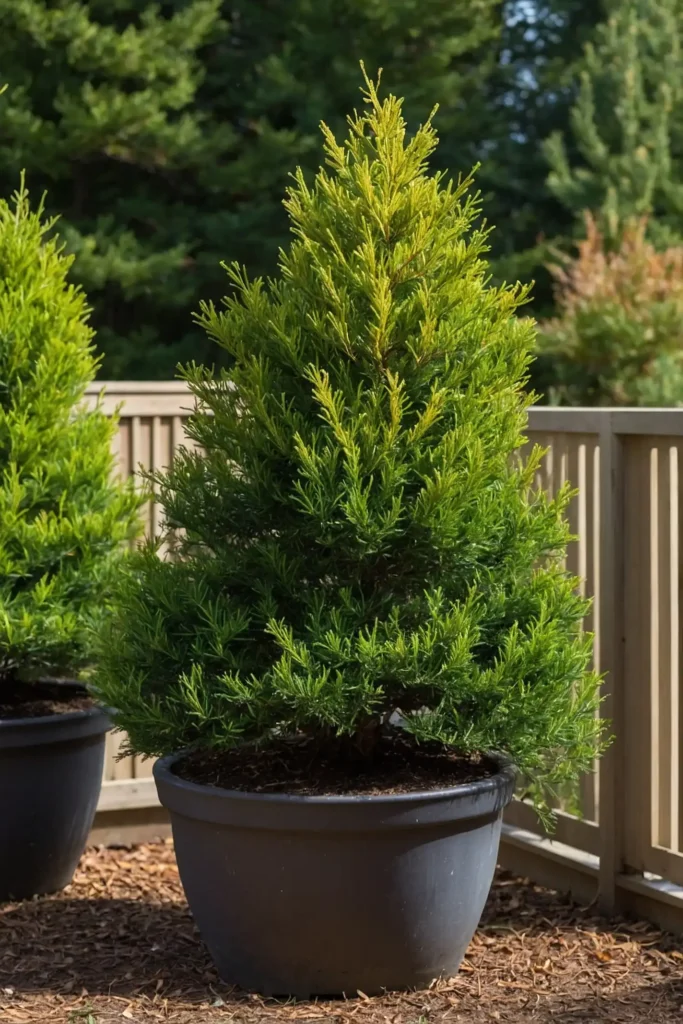
For elegant privacy, Japanese cedar grows 2-3 feet yearly with soft-textured, evergreen foliage that adds unique character to screening plantings.
The ‘Radicans’ cultivar stays more compact than the species.
These graceful conifers develop a pyramidal form that requires minimal pruning. In autumn and winter, the foliage often takes on bronze or plum tones.
Plant in rich, slightly acidic soil with consistent moisture for best growth, spacing plants 6-8 feet apart.
20: Texas Privet (Ligustrum japonicum ‘Texanum’)

This improved privet grows 2-3 feet annually and maintains denser foliage in hot climates than many privacy options.
Its glossy, evergreen leaves create effective year-round screening.
Texas privet tolerates urban pollution and poor soil conditions once established. The fragrant white flower clusters appear in spring, attracting pollinators.
Prune as needed to maintain your desired height, as these vigorous growers can reach 8-10 feet tall and nearly as wide.
21: Wax Myrtle (Myrica cerifera)

For natural-looking privacy, wax myrtle grows 3-5 feet yearly and produces aromatic, olive-green foliage that deters insects naturally.
Native to coastal areas, it tolerates both wet soils and drought.
These versatile evergreens develop an attractive multi-stemmed form that works well in informal landscapes.
Female plants produce blue-gray berries that attract birds.
Plant in full sun to light shade, spacing plants 4-5 feet apart for a hedge that quickly becomes deer-resistant and low-maintenance.
Conclusion
With these fast-growing privacy shrub options, you can transform your exposed yard into a secluded retreat in just a few growing seasons.
Choose varieties that match your climate, soil, and aesthetic preferences for a living screen that enhances your landscape for years to come.

